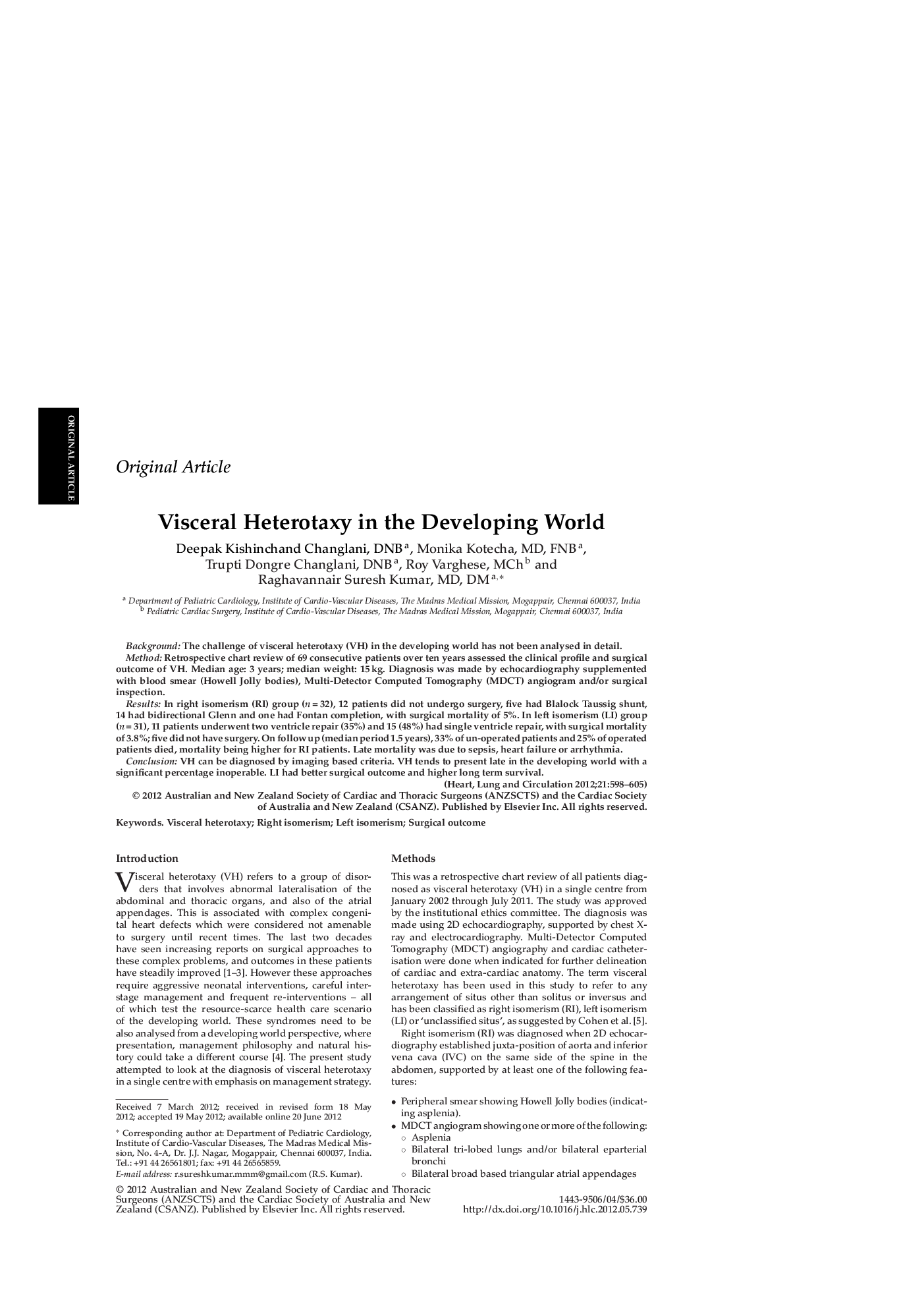| Article ID | Journal | Published Year | Pages | File Type |
|---|---|---|---|---|
| 2917849 | Heart, Lung and Circulation | 2012 | 8 Pages |
BackgroundThe challenge of visceral heterotaxy (VH) in the developing world has not been analysed in detail.MethodRetrospective chart review of 69 consecutive patients over ten years assessed the clinical profile and surgical outcome of VH. Median age: 3 years; median weight: 15 kg. Diagnosis was made by echocardiography supplemented with blood smear (Howell Jolly bodies), Multi-Detector Computed Tomography (MDCT) angiogram and/or surgical inspection.ResultsIn right isomerism (RI) group (n = 32), 12 patients did not undergo surgery, five had Blalock Taussig shunt, 14 had bidirectional Glenn and one had Fontan completion, with surgical mortality of 5%. In left isomerism (LI) group (n = 31), 11 patients underwent two ventricle repair (35%) and 15 (48%) had single ventricle repair, with surgical mortality of 3.8%; five did not have surgery. On follow up (median period 1.5 years), 33% of un-operated patients and 25% of operated patients died, mortality being higher for RI patients. Late mortality was due to sepsis, heart failure or arrhythmia.ConclusionVH can be diagnosed by imaging based criteria. VH tends to present late in the developing world with a significant percentage inoperable. LI had better surgical outcome and higher long term survival.
